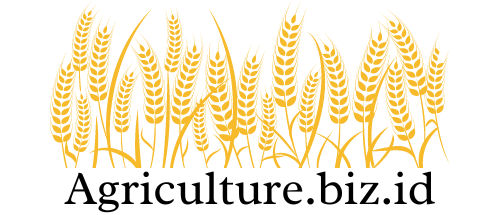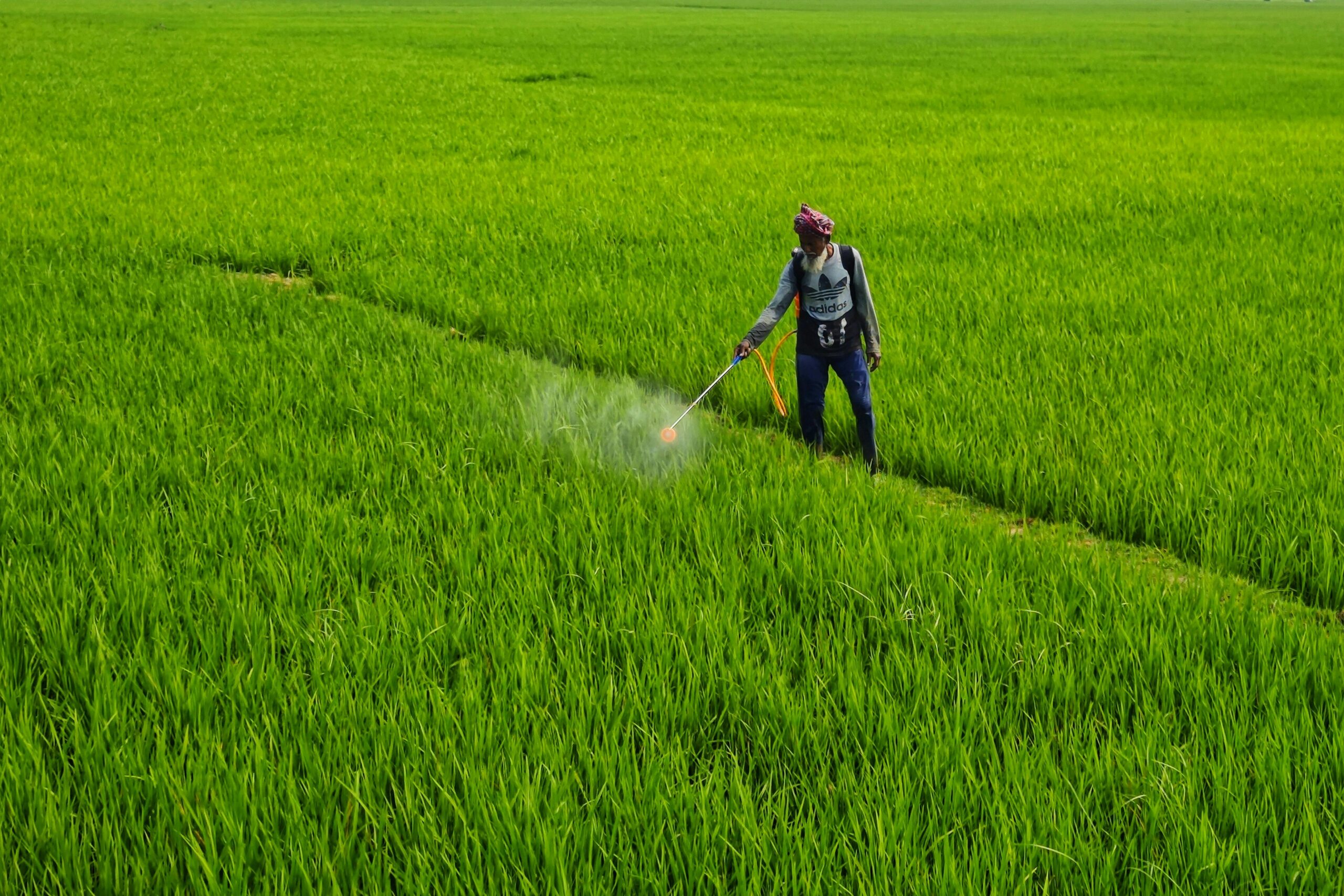Welcome to our informative blog where we delve into the world of herbicides. In this comprehensive guide, we will explore the ins and outs of these essential tools for weed control. Whether you’re a seasoned gardener or just starting out, understanding herbicides is crucial for maintaining a healthy and vibrant landscape.
Understanding Herbicides: An Introduction
Herbicides, commonly referred to as weed killers, are chemical substances used to control and eliminate unwanted plants, commonly known as weeds. They are an essential tool for maintaining the health and appearance of gardens, lawns, and agricultural fields. Herbicides work by interfering with the growth and development of weeds, ultimately leading to their demise.
It is important to note that herbicides come in various types, each designed to target specific weed species or growth stages. Selective herbicides, for instance, target specific weeds while leaving desirable plants unharmed. On the other hand, non-selective herbicides are effective against all plant species, making them suitable for total vegetation control.
Advantages of Using Herbicides
When used correctly and responsibly, herbicides offer several advantages for weed management:
- Efficiency: Herbicides are highly effective in controlling weeds, providing a quick and reliable solution for weed infestations.
- Convenience: Unlike manual weeding, herbicides can cover large areas in a short amount of time, saving considerable effort and labor.
- Cost-effectiveness: In the long run, using herbicides can be a cost-effective method of weed control, especially for large-scale applications.
- Preserving soil structure: By targeting weeds at their roots, herbicides help prevent damage caused by manual removal, such as soil erosion or disturbance of beneficial microorganisms.
Important Considerations
While herbicides offer numerous benefits, it is crucial to use them responsibly and with caution:
- Read and follow instructions: Always carefully read and adhere to the instructions provided by the herbicide manufacturer to ensure safe and effective use.
- Choose the right herbicide: Select an appropriate herbicide based on the target weed species, growth stage, and the surrounding environment.
- Proper application: Apply herbicides during suitable weather conditions and follow recommended application rates to minimize the risk of unintended damage.
- Protect yourself and the environment: Wear protective clothing, gloves, and goggles when handling herbicides, and avoid using them near water bodies or sensitive areas.
By understanding the fundamentals of herbicides and taking necessary precautions, you can effectively manage weed populations while maintaining the health and beauty of your landscape.
Types of Herbicides
Herbicides can be classified into different types based on their mode of action and target weeds. Understanding the various types will help you choose the most appropriate herbicide for your specific needs. Here are some common types of herbicides:
1. Pre-emergent Herbicides
Pre-emergent herbicides are applied before weed seeds germinate or emerge from the soil. These herbicides form a barrier on the soil surface, preventing weed seeds from sprouting and establishing. They are particularly effective in controlling annual weeds and can be used in lawns, gardens, and agricultural fields.
2. Post-emergent Herbicides
Post-emergent herbicides are applied to actively growing weeds. They work by targeting the foliage or the entire plant, interrupting vital processes and causing the weed to wither and die. These herbicides can be selective, targeting specific weed species, or non-selective, controlling a wide range of weeds.
3. Contact Herbicides
Contact herbicides kill only the plant parts they come into direct contact with. They are commonly used for fast-acting control of emerged weeds. However, they may not effectively kill the weed’s root system and may require repeated applications for complete eradication.
4. Systemic Herbicides
Systemic herbicides are absorbed by the plant and distributed throughout its tissues, including the roots. They provide a more thorough and long-lasting control, as they target the entire plant, from foliage to the root system. Systemic herbicides are useful for controlling perennial weeds.
5. Selective Herbicides
Selective herbicides are designed to target specific weed species while leaving desirable plants unharmed. They are commonly used in lawns and agricultural settings where the goal is to control weeds without damaging the desired vegetation.
6. Non-selective Herbicides
Non-selective herbicides are effective against all plant species they come into contact with. They are often used for total vegetation control in areas such as driveways, sidewalks, and fence lines. Care should be taken when using non-selective herbicides to avoid damaging surrounding plants.
Understanding the different types of herbicides will help you choose the right product for your weed control needs. Always read and follow the product label instructions for optimal and safe usage.
Factors to Consider when Using Herbicides
While herbicides can be effective tools for weed control, it is crucial to consider certain factors to ensure their safe and efficient use. Here are some important considerations:
1. Timing
Timing is crucial when applying herbicides. Consider the growth stage of the target weeds, as some herbicides are more effective on young, actively growing weeds, while others are best applied when weeds have reached a certain size or growth stage. Applying herbicides at the right time can maximize their effectiveness and minimize the need for repeat applications.
2. Weather Conditions
The weather conditions at the time of herbicide application can greatly impact their efficacy. It is generally recommended to apply herbicides on calm days with minimal wind to prevent drift and ensure that the herbicide reaches its intended target. Additionally, avoid applying herbicides during periods of heavy rain, as it can wash away the product before it has a chance to work.
3. Application Equipment
The type of equipment used for herbicide application plays a crucial role in achieving desired results. Ensure that the equipment is properly calibrated to apply the correct amount of herbicide, as both under-application and over-application can lead to ineffective weed control or damage to desirable plants. Follow the manufacturer’s recommendations for equipment maintenance and calibration.
4. Safety Precautions
When using herbicides, it is important to prioritize safety. Wear appropriate personal protective equipment, such as gloves, goggles, and a mask, to protect yourself from potential exposure. Avoid applying herbicides near water bodies, as they can be harmful to aquatic life. Store herbicides in a secure location away from children and pets.
5. Environmental Considerations
Take into account the potential impact of herbicides on the environment. Choose herbicides with lower toxicity and environmental persistence, and consider alternative, more environmentally friendly weed control methods when appropriate. Follow any local regulations or restrictions regarding herbicide use in your area.
By considering these factors and following best practices for herbicide application, you can effectively control weeds while minimizing potential risks to human health and the environment.
Tips for Safe and Effective Herbicide Application
To ensure safe and effective herbicide application, it is important to follow these tips:
1. Read and Follow Instructions
Always read and follow the instructions provided by the herbicide manufacturer. Pay attention to the recommended application rates, mixing instructions, and safety precautions. Using the herbicide as directed will help you achieve optimal results while minimizing potential risks.
2. Proper Mixing
When preparing the herbicide solution, carefully measure and mix the herbicide according to the manufacturer’s instructions. Proper mixing ensures that the herbicide is evenly distributed, providing consistent weed control. Use clean containers and stir or shake the mixture thoroughly before application.
3. Spot Treatment
Consider spot treatment when dealing with localized weed infestations. Spot treatment involves applying herbicides only to the areas with weeds, reducing the amount of herbicide used and minimizing the impact on desirable vegetation. This method is particularly useful in gardens and landscaped areas.
4. Avoid Drift
Herbicide drift can occur when spray particles are carried by wind and land on unintended areas, potentially damaging desirable plants or contaminating water sources. To minimize drift, choose calm days for herbicide application, avoid spraying when wind speeds exceed recommended limits, and use appropriate nozzle and spray pressure settings.
5. Clean Equipment
After each use, thoroughly clean all herbicide application equipment to prevent cross-contamination and ensure accurate application in future uses. Rinse sprayers, nozzles, and other equipment with clean water, and dispose of any leftover herbicide or rinsate according to local regulations.
6. Monitor and Evaluate
Regularly monitor treated areas to evaluate the effectiveness of herbicide application. If necessary, follow up with additional treatments or alternative weed control methods for persistent or newly emerging weeds. Monitoring helps ensure that weed populations are adequately managed and prevents the development of herbicide resistance.
By following these tips, you can safely and effectively apply herbicides, achieving successful weed control while minimizing negative impacts on the environment and surrounding vegetation.
Alternatives to Herbicides for Weed Control
If you prefer to explore alternative methods for weed control or are looking for additional strategies to complement herbicide use, consider the following options:
1. Manual Weeding
Manual weeding involves physically removing weeds by hand or using tools such as hoes or weed pullers. While it can be labor-intensive, manual weeding is effective for small-scale weed control, particularly in garden beds or areas with delicate plants.
2. Mulching
Mulching is the process of covering soil with a layer of organic or inorganic material such as wood chips, straw, or plastic. Mulch helps suppress weed growth by blocking sunlight and preventing weed seeds from germinating. Additionally, it helps retain soil moisture and regulate soil temperature.
3. Cultural Practices
Implementing cultural practices can help prevent weed infestations and promote healthier plants. Some practices include proper spacing of plants to reduce competition, regular and appropriate watering to encourage strong plant growth, and promoting healthy soil through proper fertilization and organic matter addition.
4. Weed Barrier Fabric
Weed barrier fabric, also known as landscape fabric, is a permeable material placed on the soil surface to inhibit weed growth. It allows air and water to penetrate while suppressing weeds. Weed barrier fabric is commonly used in garden beds, under mulch, or in areas where low-maintenance weed control is desired.
5. Flame Weeding
Flame weeding involves using a propane torch or flame weeder to heat and kill weeds. This method is effective for annual weeds and can be used in areas such as driveways, sidewalks, or gravel paths. Care should be taken to avoid damaging desired plants and to follow safety precautions.
6. Biological Control
Biological control involves using natural enemies, such as insects or pathogens, to suppress weed populations. This method is often used in agricultural settings and requires careful consideration to prevent unintended ecological impacts. Consult with local agricultural extension services for guidance.
By incorporating these alternative methods into your weed control practices, you can diversify your approach and reduce reliance on herbicides while maintaining a healthy and weed-free landscape.
In conclusion, herbicides are valuable tools for effectively managing weeds in various settings, from gardens and lawns to agricultural fields. Understanding the different types of herbicides and their appropriate use can help you achieve successful weed control while minimizing negative impacts on the environment and desired vegetation.
When using herbicides, it is important to prioritize safety by following instructions, wearing protective gear, and considering environmental factors. Additionally, exploring alternative weed control methods such as manual weeding, mulching, and cultural practices can provide additional options for maintaining a weed-free landscape.
Remember to always read and adhere to the instructions provided by herbicide manufacturers, choose the right herbicide for the target weeds and growth stage, and apply the herbicide at the proper timing and weather conditions. Regular monitoring and evaluation of treated areas will ensure effective weed management and prevent the development of herbicide resistance.
By combining responsible herbicide use with alternative methods, you can create a balanced and sustainable approach to weed control, resulting in a healthy and vibrant outdoor space.

